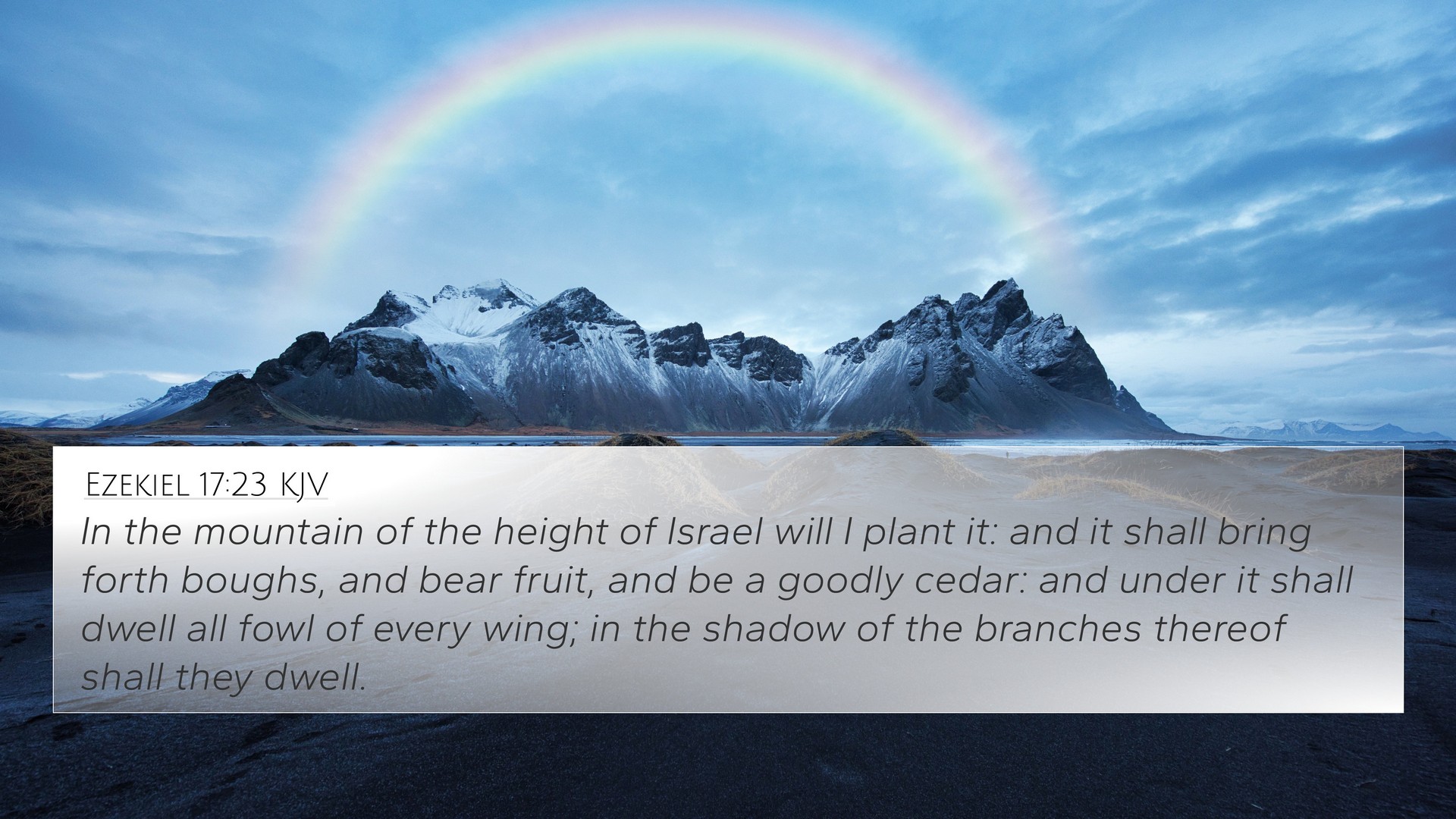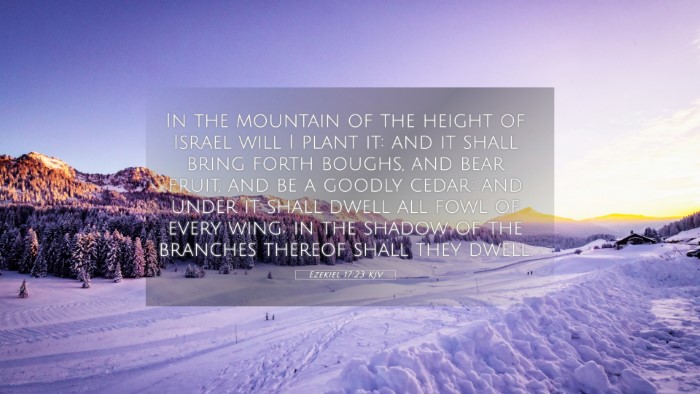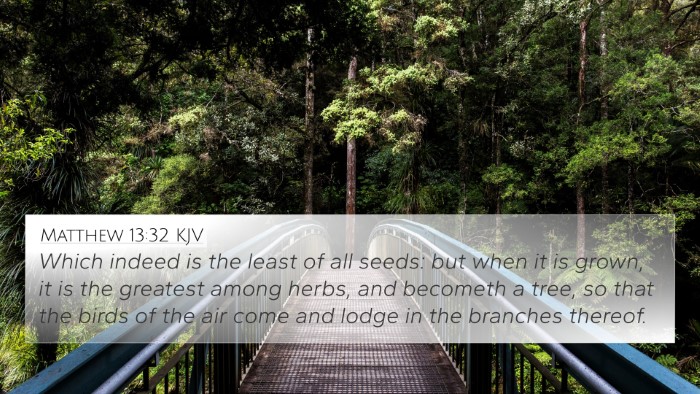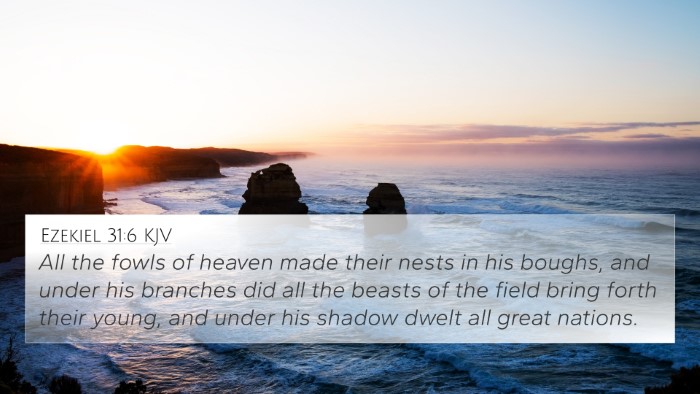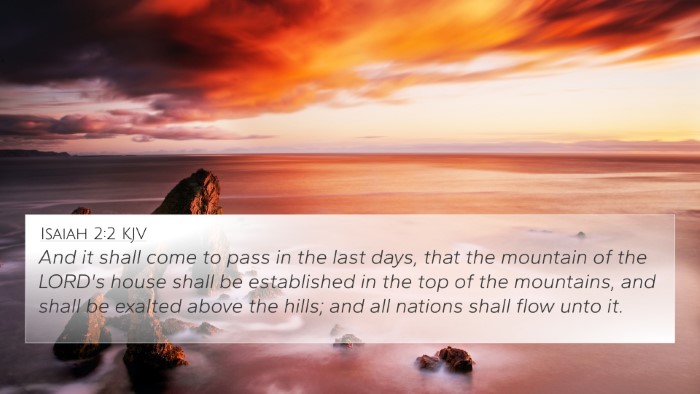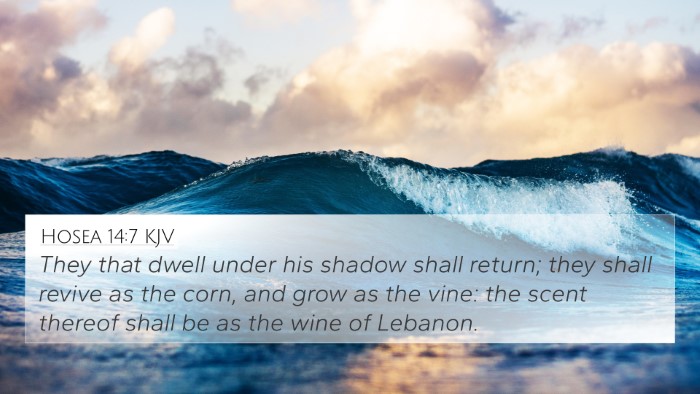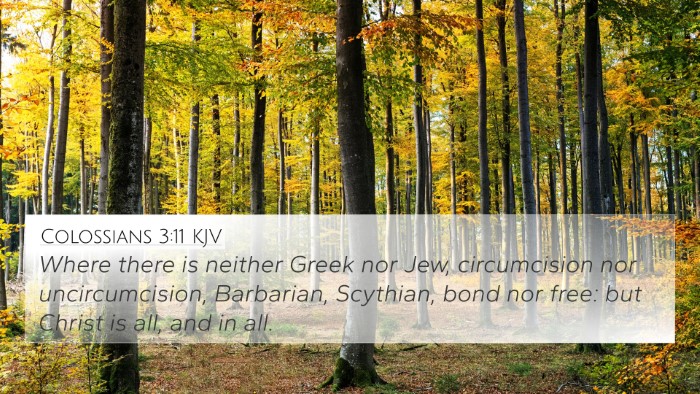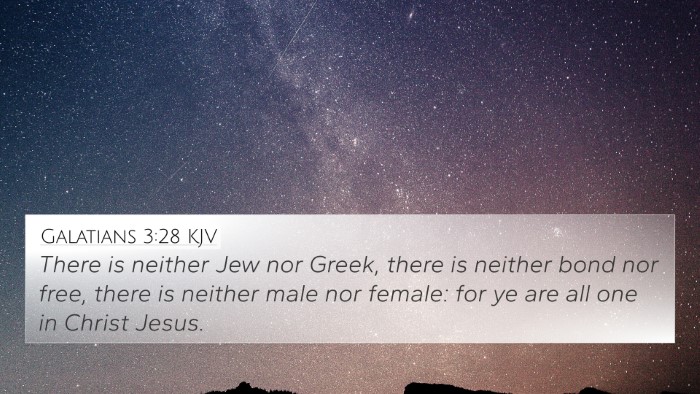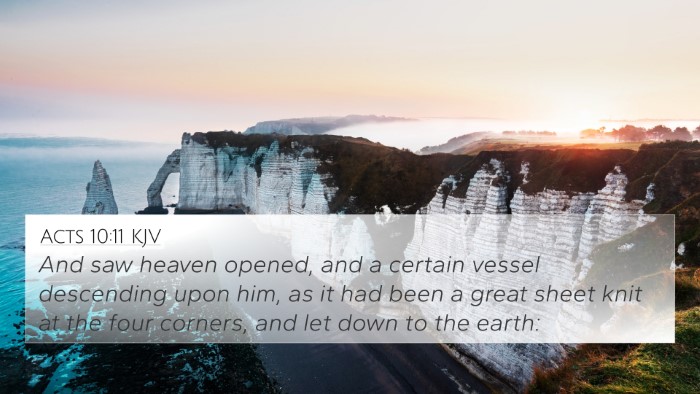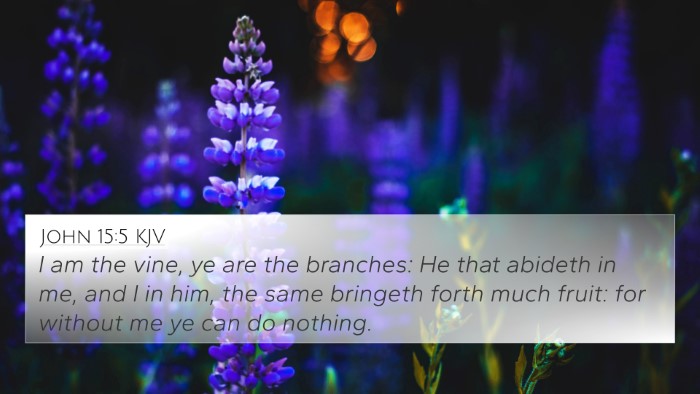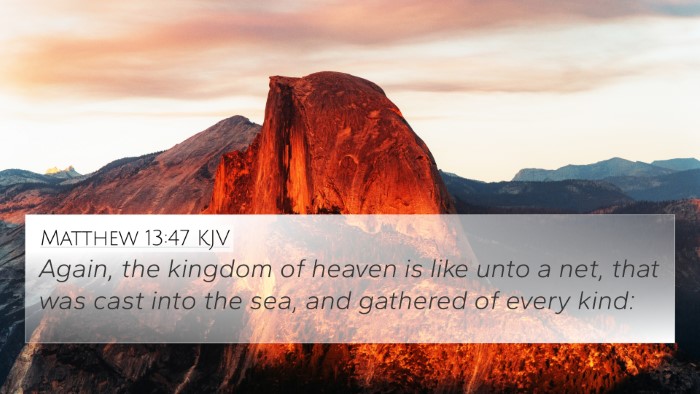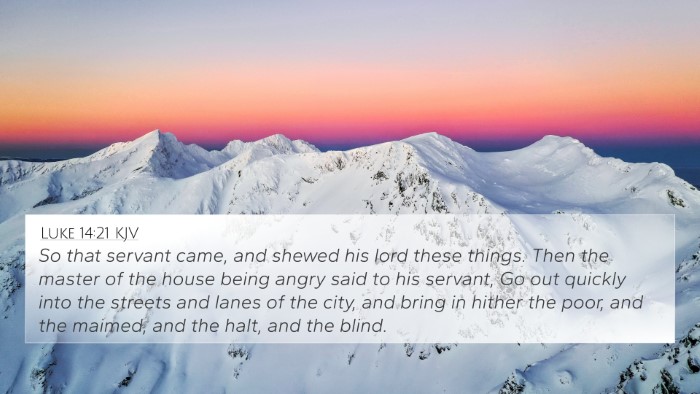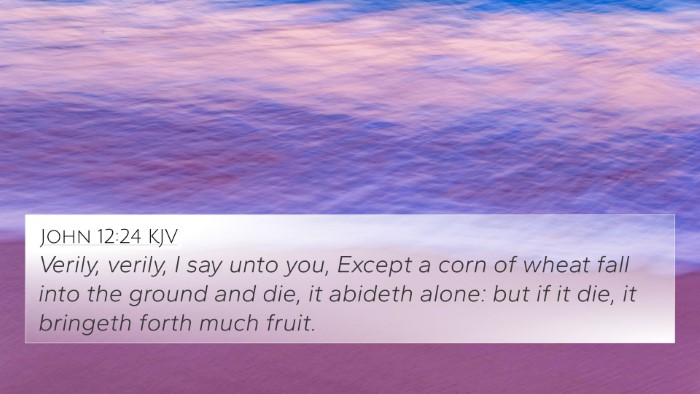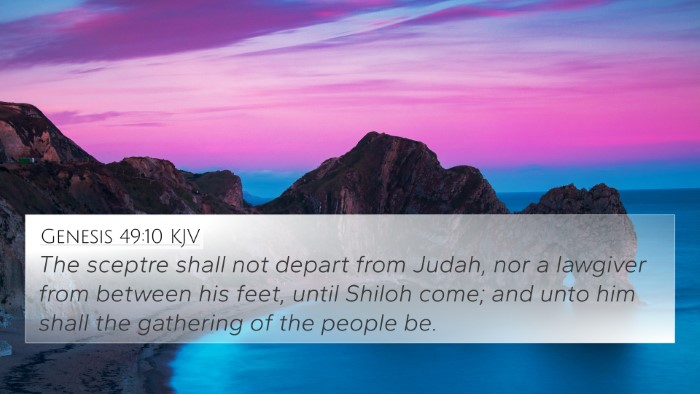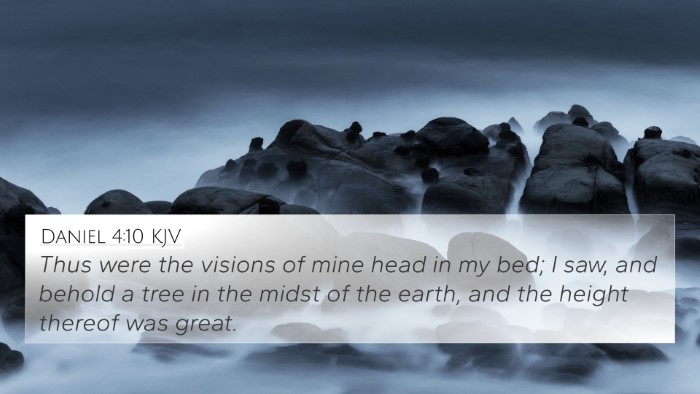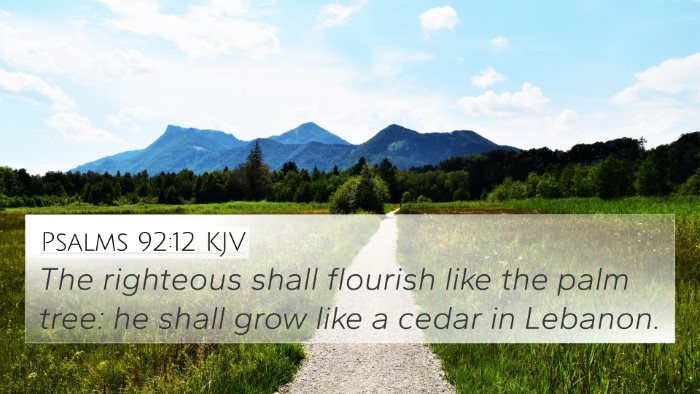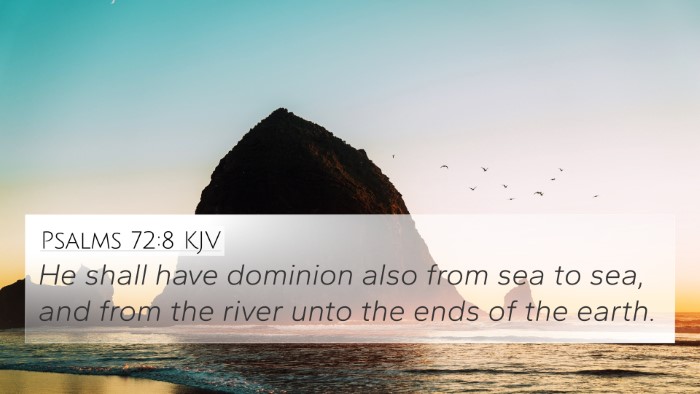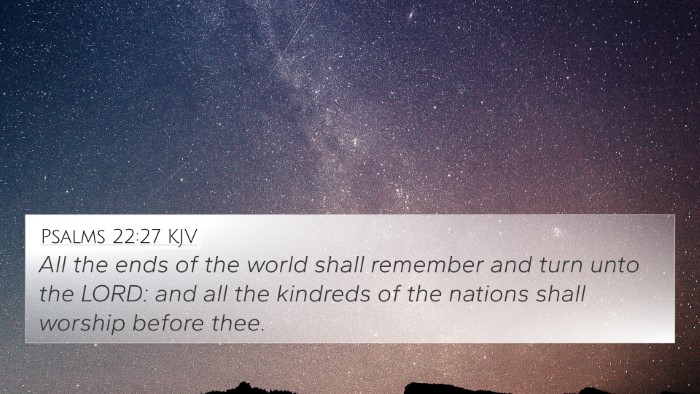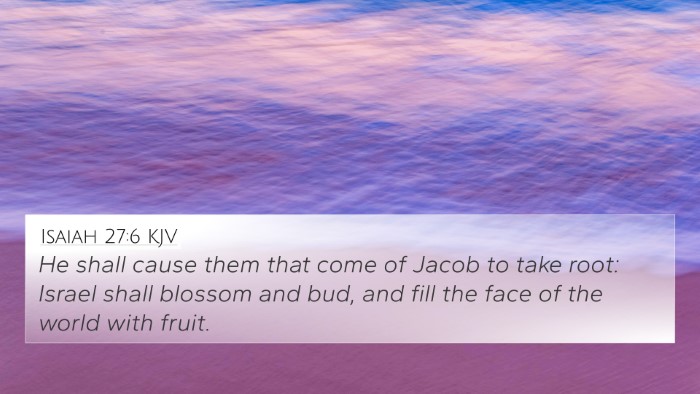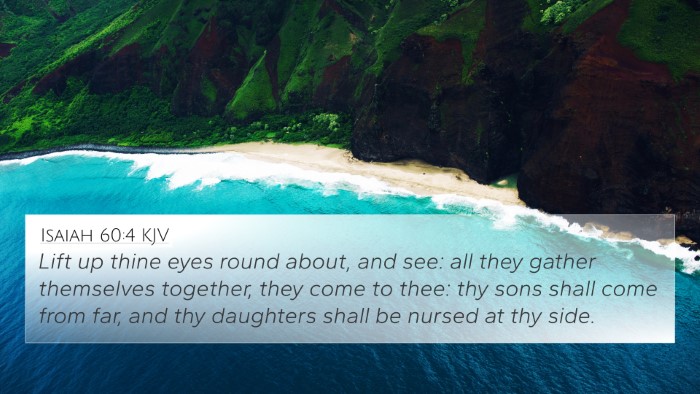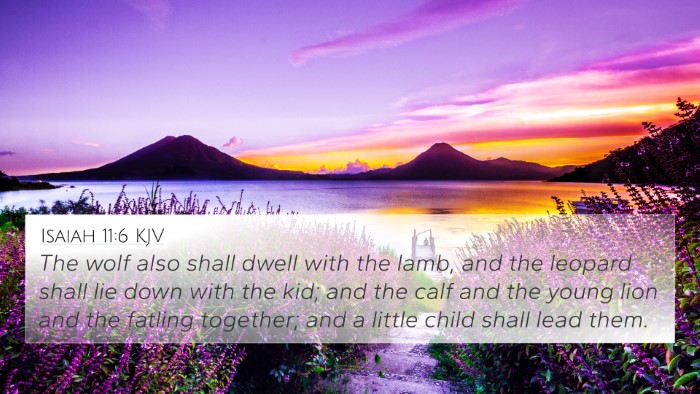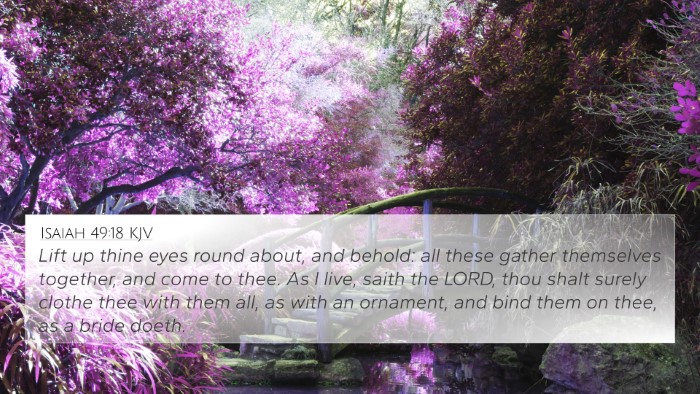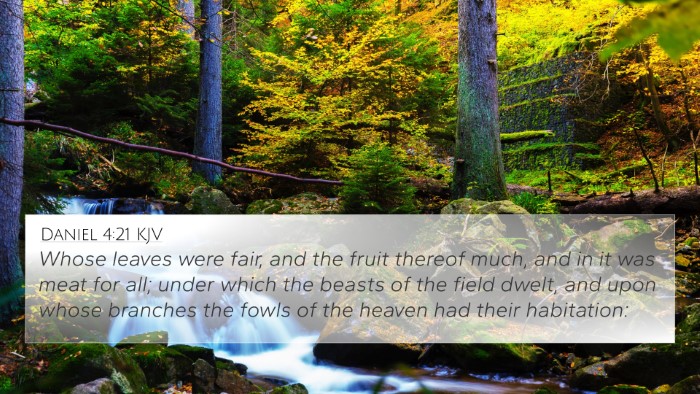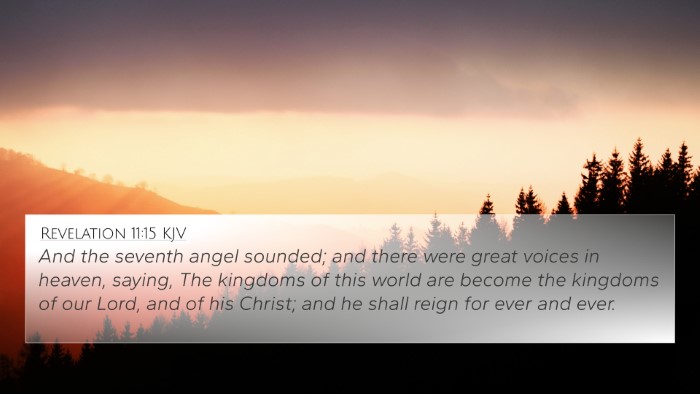Ezekiel 17:23 - Summary and Interpretation
The verse Ezekiel 17:23 states: "On the mountain height of Israel I will plant it, and it will bear branches and produce fruit, and it will become a splendid cedar. And under it will dwell every bird of every sort; in the shade of its branches birds of every sort will nest."
This verse carries profound meaning regarding God's sovereignty and His plan for Israel and the nations. Through the imagery of a magnificent cedar tree, Ezekiel conveys the promise of growth, protection, and a place of refuge for all creation.
Insights from Public Domain Commentaries
Matthew Henry's Commentary
Matthew Henry interprets this verse as a promise of restoration for Israel. He emphasizes that the "mountain height of Israel" signifies a place of prominence and honor where God will fulfill His covenant. The description of the cedar reflects not only strength and longevity but also the universal blessing that will flow from it. Birds of every sort represent nations and peoples finding shelter and comfort in God’s promises. This signifies inclusiveness and the divine provision for the world.
Albert Barnes' Notes
Albert Barnes points out that the cedar tree symbolizes kingdom and prosperity, highlighting that God's planting indicates a divine act, whereby God Himself establishes His Kingdom among the nations. Under the shade of the tree represents security and peace, illustrating how God provides for those who seek refuge in Him. Barnes notes that the birds symbolize different nations that will come to dwell under God's blessing, indicating the global significance of God's plan.
Adam Clarke's Commentary
Adam Clarke elaborates on the imagery of the tree, relating it to the Messianic expectations. He indicates that the "splendid cedar" represents the glory of the Messiah's reign, where the nations will be brought together under His rule. Clarke emphasizes God's initiative in planting the tree, symbolizing His active role in the growth and expansion of His Kingdom on Earth. This underlines the theme of hope and restoration, which is central to Ezekiel's message.
Bible Verse Cross-References
- Psalm 1:3: "He is like a tree planted by streams of water that yields its fruit in its season." - Illustrates the theme of divine planting and flourishing.
- Isaiah 61:3: "To grant to those who mourn in Zion...that they may be called oaks of righteousness, the planting of the Lord." - Connects the idea of God's planting with restoration.
- Ezekiel 31:3: "Behold, Assyria was a cedar in Lebanon." - Uses the cedar metaphor, indicating the splendor of God's creation.
- Matthew 13:31-32: "The kingdom of heaven is like a grain of mustard seed... it is the greatest of shrubs." - Relates the growth of God's Kingdom to the imagery of trees.
- Revelation 22:2: "The leaves of the tree were for the healing of the nations." - Indicates the universal blessing stemming from God's provision.
- Jeremiah 17:7-8: "Blessed is the man who trusts in the Lord...he is like a tree planted by water." - Similar imagery of strength and growth.
- John 15:5: "I am the vine; you are the branches." - Signifying connection and dependency on Christ for spiritual sustenance.
Connections Between Bible Verses
Ezekiel 17:23 creates a rich tapestry of thematic connections throughout the Scriptures, particularly regarding God's promise of shelter and grace. The use of botanical metaphors conveys a sense of life, growth, and divine providence. These connections underlie important theological frameworks about God's Kingdom and His relationship with humanity.
Thematic Bible Verse Connections
The themes in Ezekiel 17:23 can be explored further through concepts of restoration and divine protection found in both the Old and New Testaments. The idea that God plants and nurtures His creation runs throughout the Bible and invites exploration of how believers find refuge in Him through the relationship established by Jesus Christ.
Tools for Bible Cross-Referencing
For those seeking to deepen their understanding of cross-referencing biblical texts, consider utilizing resources such as a bible concordance or a bible cross-reference guide. These tools can assist in identifying themes, connecting verses, and unlocking treasures of meaning embedded within Scripture.
How to Use Bible Cross-References
Understanding how to find cross-references in the Bible enhances one's study experience. Start by identifying key words or themes in a verse. Search these concepts throughout different books and chapters to see how they interlink, providing a richer context and deeper insight into the message of Scripture.
Inter-Biblical Dialogue
The inter-Biblical dialogue showcased in Ezekiel 17:23 and its related verses fosters an environment for comparative Bible verse analysis. By engaging with similarities and differences within the Biblical text, readers can gain insights into the continuity of God's purpose across both testaments.
Conclusion
In sum, Ezekiel 17:23 embodies God's promise of restoration and shelter, resonating through various scriptures that echo similar themes of growth and divine providence. By exploring these connections and utilizing cross-references, believers can find peace and hope in God's unwavering faithfulness, as illustrated through the metaphor of the splendid cedar.
